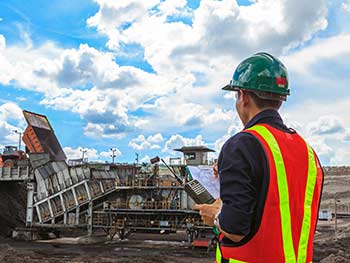
For some of us, summer is a time of trips to the beach and other types of fun. But for those who work in construction, it means long days laboring in the sun, sometimes in extreme heat and under hazardous conditions. Construction jobs are some of the most perilous occupations in which you can engage, and the hottest months often make such jobs even more dangerous. The 2013 estimates for the months with the most work-related injuries per day, from the Bureau of Labor Statistics (BLS), were June (3,336.0), July (3,282.4), and August (3,375.5).
If you work in the industry, perhaps this is not news. However, you might not be aware of some of the special hazards that summer brings your way.
What’s So Risky About Construction Work?
Construction work’s deadliest accidents are called “the Fatal Four:” falling, getting struck by objects, being caught between or inside objects, and electrocution. Year-round, such accidents cause many of the fatalities and injuries suffered on construction sites. The most common and most dangerous risk of construction work comes from falling: falls from high places such as roofs, falling off scaffolding, collapsing scaffolding, slippery surfaces, and so forth. If you’ve been injured in a construction accident in Baltimore, it’s critical to seek the advice of a qualified Baltimore construction accident lawyer to ensure your rights are protected and you receive the compensation you deserve.
However, summertime carries its own special risks that you need to be aware of:
- Heat illness
- Bad weather
- Poisonous plants, insects, and creatures
- Eye dangers.
Heat Exhaustion and Heat Stroke
One of the most common injuries while on the job comes from heat—and it can also be one of the deadliest. During 2014, 18 workers died from heat stroke while on the job, and 2,630 suffered some form of heat illness. Working in the direct sun, when the temperature and the humidity are high, means that you need to take breaks to avoid illness.
Heat exhaustion is characterized by dizziness, weakness, cramps, nausea, and vomiting. If unchecked, heat exhaustion can proceed to heat stroke, which can be fatal. Heat stroke’s symptoms are a high body temperature; red, hot, non-sweaty skin; confusion; fainting; and convulsions.
The Occupational Safety and Health Administration (OSHA) requires employers to keep workers safe from heat illness by providing water, shade, and frequent breaks. When you rest, do so in the shade or in air conditioning, and drink water regularly, as often as every 15 minutes.
OSHA does have a downloadable app that calculates the heat index, providing a risk assessment tool for how hot your worksite is.
Dangerous Weather
Summer is a time for thunderstorms, with lightning, drenching rains, and even tornados becoming risks. Those who work in high places—roofs, trees, buckets, or in machinery such as cranes or bulldozers—are most at risk when it comes to lightning. Remember, if you can hear thunder, lightning is close enough to strike you.
Intense rainfall can be deadly for those working in trenches. After a heavy rain, trenches should be checked to ensure that they are still safe to work in without the risk of collapse. Rain can also make roofs perilously slick.
Strong winds from changing weather can create falling hazards for anyone working at great heights.
Poisonous Nature
Your worksite may contain a number of poisonous plants, such as poison ivy, poison sumac, and poison oak. It’s estimated that 80 to 90 percent of people will have an allergic reaction to exposure to these plants. Some reactions can be severe. But there are precautions you can take, such as wearing long pants, long sleeves, and using a barrier cream with bentoquatam in it.
Likewise, be aware of the many possibilities for swarms of stinging insects like hornets, poisonous spiders, and snakes. If your job takes you into the brush, exercise caution before you move logs and cut tall grasses. Watch where you step.
Eye Risks
Safety eyewear is important all year long, but in the summer, your eyes can be exposed to such hazards as strong winds that carry debris, extreme heat, and strong sunlight. Almost all eye injuries are preventable; wear any eye safety gear provided to you. The BLS reported that eye injuries took more than 25,000 workers off the job for at least one day in 2013.
As a worker, you can only take so many precautions yourself. The company you work for must also step up and do their part. It is the right thing to do, of course, but it is also the law. You have a legal right to safety while working.
Injured on the Job? Call A Local Baltimore Work Injury Lawyer.
Equipment malfunction, co-worker negligence, and bad decisions can place workers at risk. Steve Heisler has devoted 25 years to helping injured people and their families pursue compensation from those who caused them to be injured. Steve approaches each case with compassion and thorough investigation, leaving no stone unturned in his goal of obtaining justice for persons harmed by the actions or inactions of negligent employers, manufacturers and sub-contractors. If you or your loved one has been injured or killed in a work-related accident anywhere in Maryland, call the Maryland workplace injury lawyer of the Law Offices of Steven H. Heisler today at 1-410-625-4878, or use our online contact form. The initial consultation is always free.
